The Star Trek: Discovery Argument Everyone Gets Wrong
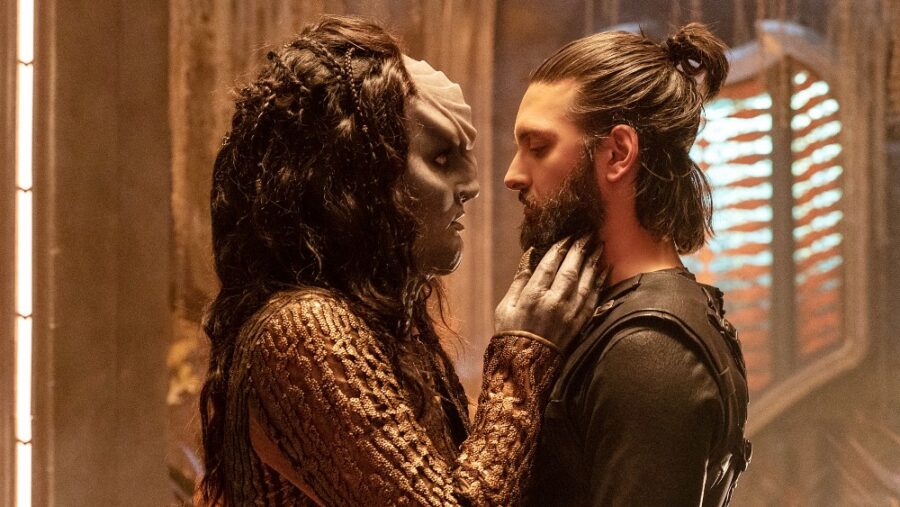
When Star Trek: Discovery first premiered, fans took exception to many aspects of this NuTrek flagship show, and there was nothing the fandom hated more than the new Klingon design. These Klingons were completely bald, featured grey skin tones, and even had wild design flourishes like sensor ridges inside their heads. Paramount ended up adding hair back to these aliens in season two, but here’s something that might shock you more than the Discovery pronunciation of Qo’noS: having a weird new Klingon design is completely consistent with the last half-century of Star Trek storytelling.
The Originals
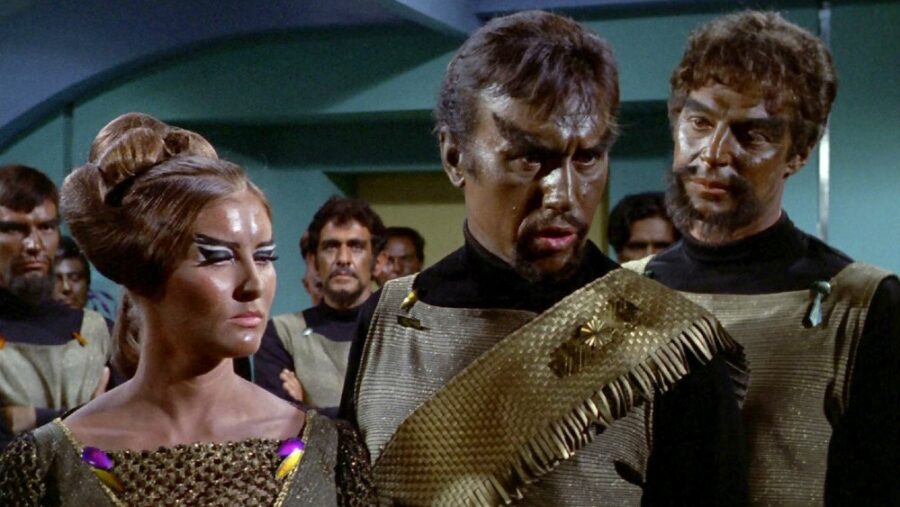
We were first introduced to this fearsome alien race in Star Trek: The Original Series. There, the Klingon design was much simpler and a tad offensive: show producer Gene Coon wanted them to be “hard-looking Asian types,” and this resulted in plenty of very white actors appearing onscreen in brownface and rocking some Fu Manchu mustaches.
Even in the original show, this look was inconsistent. During the second season, for example, ditched brownface for the Klingons, but it made its ugly return in season three as well as Star Trek: The Animated Series.
The Coming Of The Turtle Heads
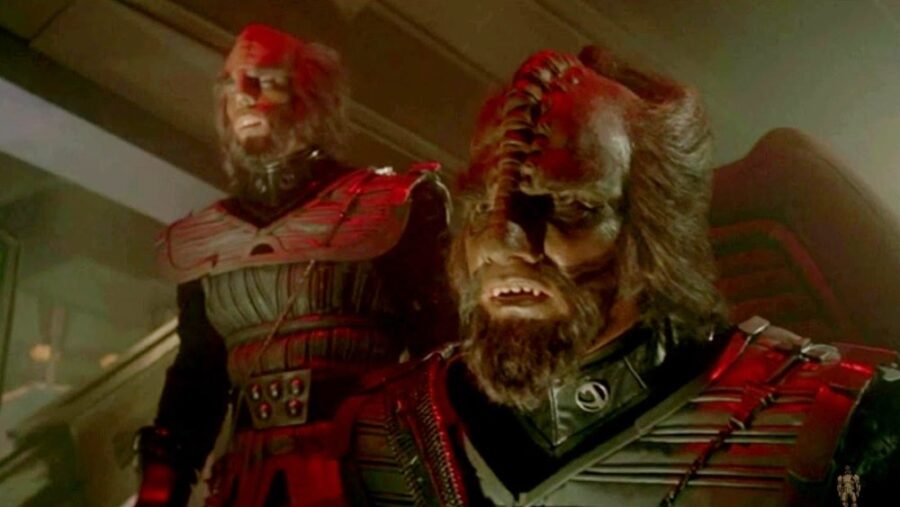
Because that show more or less supported the original alien design (though their animated skin was sometimes more orange than brown), fans at the time had no reason to believe that the Klingon design would ever change. But when Star Trek: The Motion Picture came out in 1979, producers used the high budget to completely change the Klingon look, using latex and heavy makeup to add features like forehead ridges and gnarly teeth.
An Attempt At An Explanation
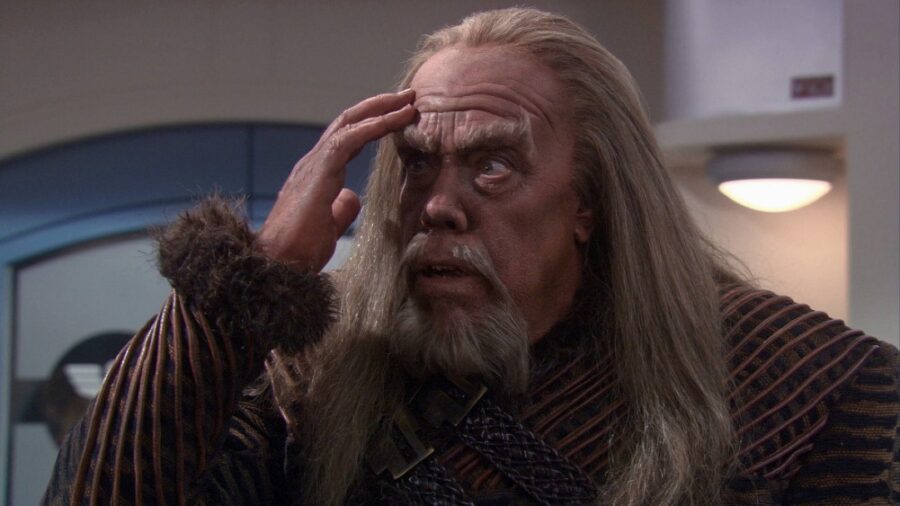
This design remained intact for decades, and it became the de facto Klingon look for all of The Next Generation, Deep Space Nine, and Voyager. Star Trek fans had mostly lost hope that we’d ever learn what caused the dramatic change in appearance, but we got a hint in the Deep Space Nine episode “Trials and Tribble-ations.” There, a time-traveling Odo, Bashir, and O’Brien are shocked to see the Klingons of Captain Kirk’s era looking so different.
When they turn to Klingon companion Worf for an explanation after speculating that it might have been a result of “genetic engineering” or “viral mutation,” he simply replies that “We do not discuss it with outsiders.” Eventually, an episode of Star Trek: Enterprise confirms that Dr. Bashir was correct in both of his speculations: when Klingon scientists try to combine DNA from Augments (enhanced humans like Khan Noonien Singh) with their warriors, it creates a virus that threatens to wipe out the empire. A kidnapped Dr. Phlox helps to develop a cure, and the only side effect is that it gives some Klingons and their descendants smooth foreheads.
The NuTrek Klingons
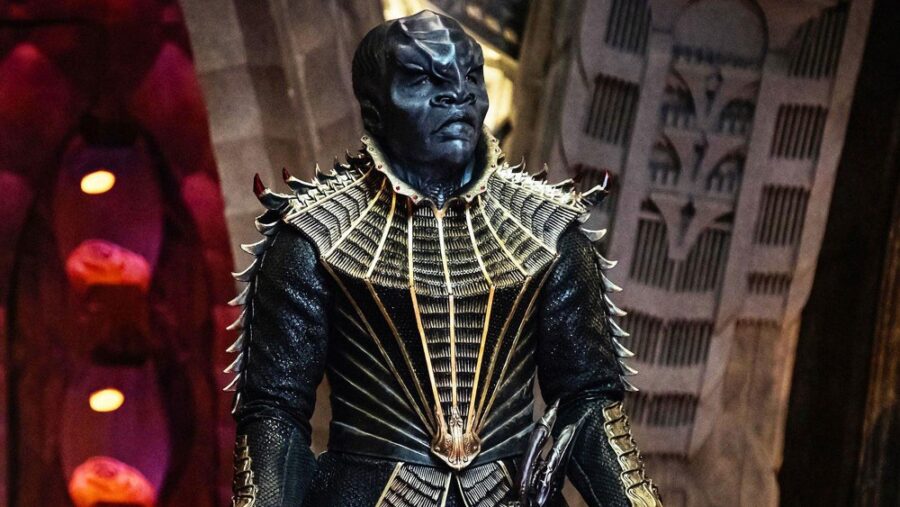
The weird Enterprise retcon explained past visual discrepancies, but fans reasonably assumed that the mainstream Klingon design wouldn’t change anytime soon. But when J.J. Abrams rebooted Star Trek, we eventually got a look at Kelvinverse Klingons in Star Trek Into Darkness. Most of the warriors were hidden behind helmets, but we get a good look at one of them, and he was was completely bald, with ceremonial piercings inside his forehead ridges.
There was very little fan pushback at the time, if only because fans had so much else to complain about with Into Darkness (a sequel that we think is secretly brilliant). In retrospect, though, it’s impossible to ignore that this film laid the groundwork for the Klingons we see in Star Trek: Discovery, right down to the bald head and decorative battle garb. The look of these aliens continued to evolve in subsequent years: Discovery Klingons got hair in season two, and the ones we have seen in Star Trek: Strange New Worlds look like a nostalgic throwback to the Klingons in The Next Generation.
For Klingons, Change Is The Status Quo
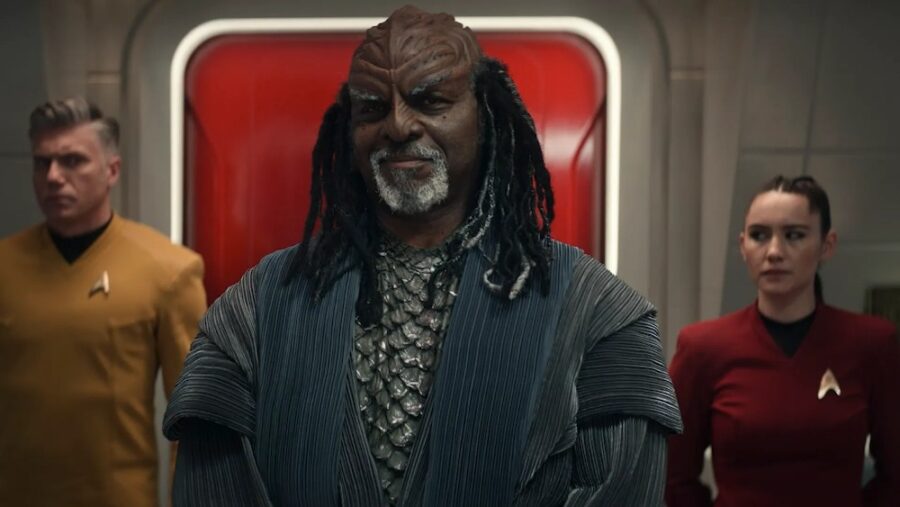
What does this Star Trek history lesson teach us about the Klingon designs in Discovery? For all that show’s many faults, the new alien design wasn’t one of them: the simple fact is that getting dramatic new looks for the Klingons goes back to The Motion Picture, and the practice isn’t likely to change anytime soon.












